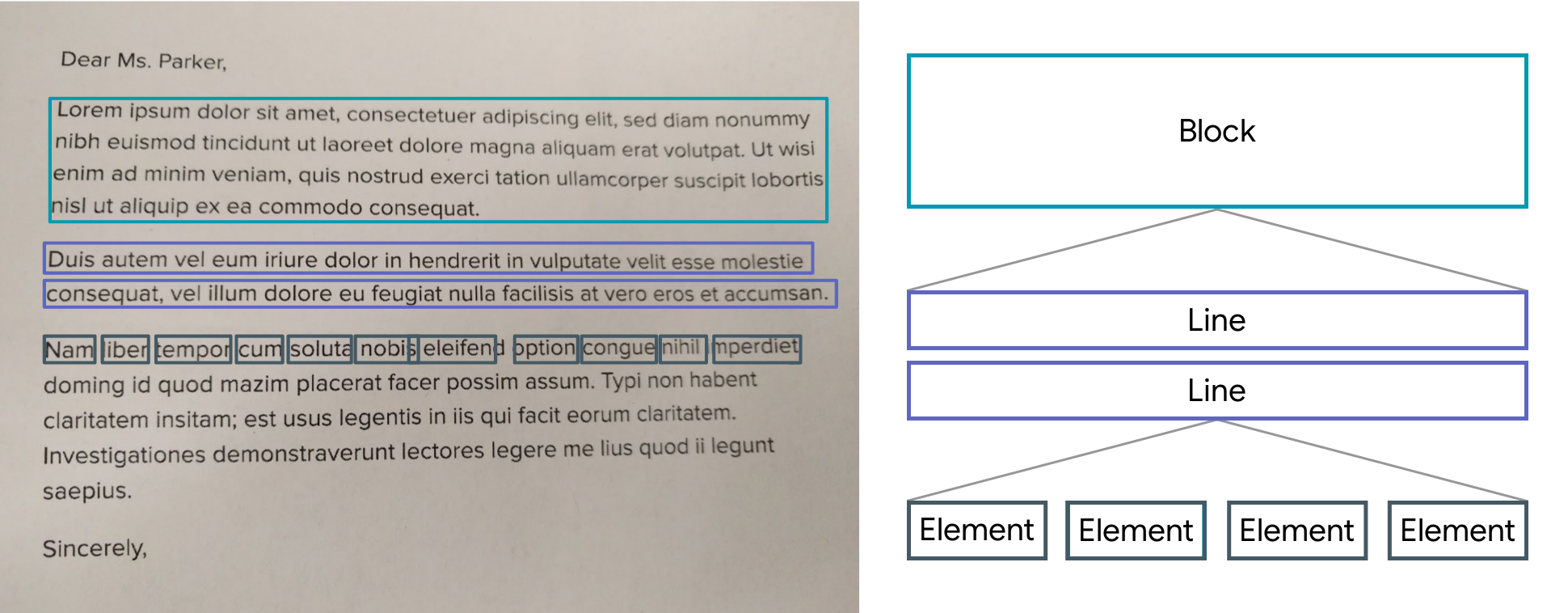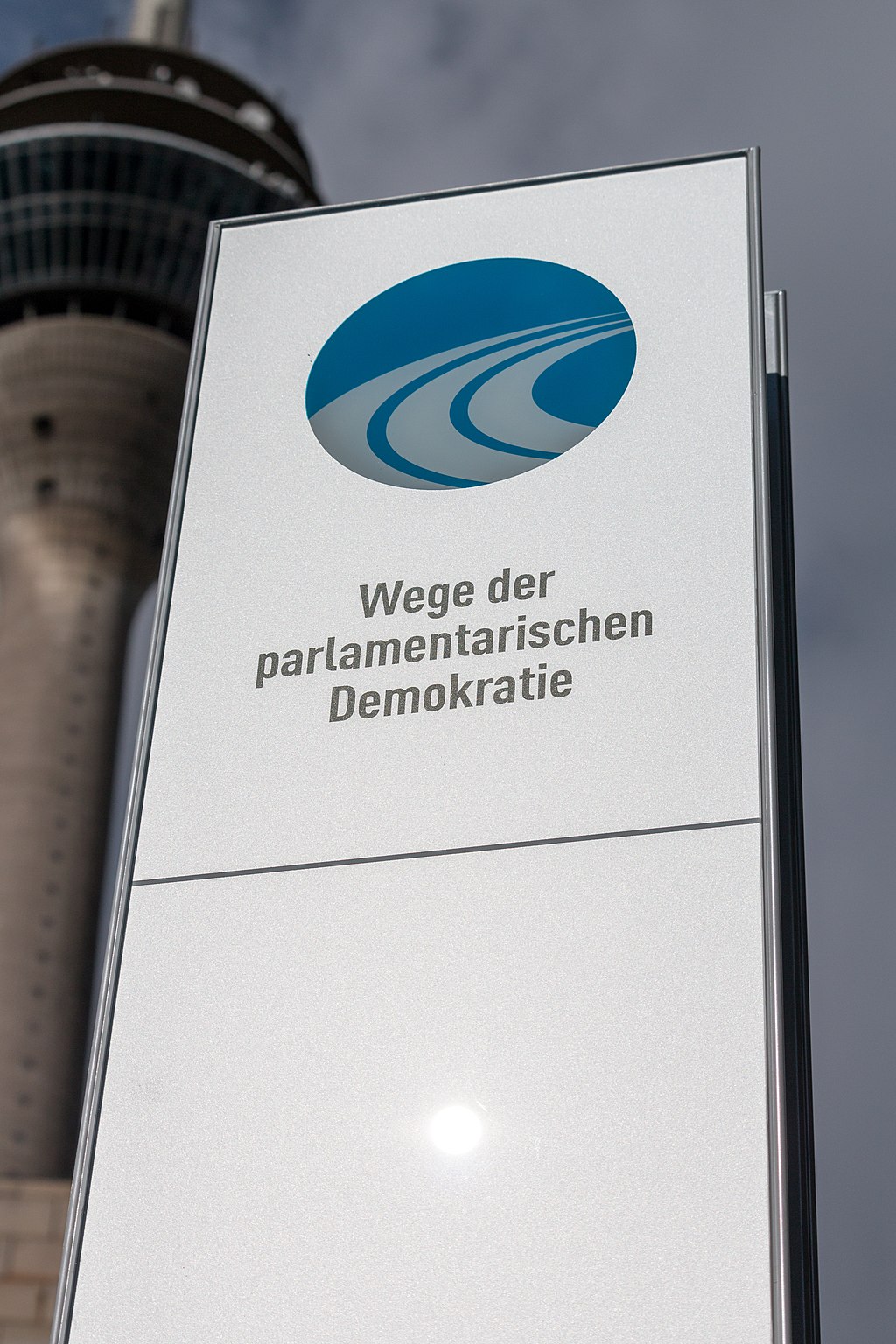
API Nhận dạng văn bản phiên bản 2 của Bộ công cụ học máy có thể nhận dạng văn bản bằng bất kỳ bộ ký tự tiếng Trung, Devanagari, Nhật Bản, Hàn Quốc và Latinh nào. API này cũng có thể được dùng để tự động hoá các công việc nhập dữ liệu, chẳng hạn như xử lý thẻ tín dụng, biên nhận và danh thiếp.
Các khả năng chính
- Nhận dạng văn bản trên nhiều hệ thống chữ viết và ngôn ngữ Hỗ trợ nhận dạng văn bản bằng tiếng Trung, chữ Devanagari, tiếng Nhật, tiếng Hàn và chữ Latinh
- Phân tích cấu trúc của văn bản Hỗ trợ phát hiện các ký hiệu, phần tử, dòng và đoạn
- Xác định ngôn ngữ của văn bản Xác định ngôn ngữ của văn bản được nhận dạng
- Nhận dạng theo thời gian thực Có thể nhận dạng văn bản theo thời gian thực trên nhiều loại thiết bị
Cấu trúc văn bản
Trình nhận dạng văn bản phân đoạn văn bản thành các khối, dòng, phần tử và ký hiệu. Nói một cách đơn giản:
Block là một tập hợp các dòng văn bản liền kề, chẳng hạn như một đoạn hoặc cột,
Dòng là một tập hợp các từ liền kề trên cùng một trục và
Phần tử là một tập hợp ký tự chữ-số ("từ") liền kề trên cùng một trục trong hầu hết các ngôn ngữ La tinh hoặc một từ trong các ngôn ngữ khác
Symbol (Biểu tượng) là một ký tự bao gồm chữ và số trên cùng một trục trong hầu hết các ngôn ngữ Latinh hoặc một ký tự trong các ngôn ngữ khác
Hình ảnh dưới đây nêu bật ví dụ về từng phương pháp trong số này theo thứ tự giảm dần. Khối được làm nổi bật đầu tiên, có màu lục lam, là một Khối văn bản. Tập hợp các khối được đánh dấu thứ hai (màu xanh dương) là Các dòng văn bản. Cuối cùng, nhóm khối được làm nổi bật thứ ba, có màu xanh dương đậm, là Từ.

Đối với tất cả khối, đường, phần tử và ký hiệu được phát hiện, API sẽ trả về hộp giới hạn, điểm góc, thông tin về chế độ xoay, điểm số tin cậy, ngôn ngữ được nhận dạng và văn bản đã nhận dạng.
Kết quả mẫu

Ảnh: Dietmar Rabich, Wikimedia Commons, "Düsseldorf, Wege der parlamentarischen Demokratie -- 2015 – 8123", CC BY-SA 4.0
| Văn bản đã nhận dạng | |
|---|---|
| Văn bản | Wege der parlamentarischen demokratie |
| Chặn bóng | (1 khối) |
| Khối 0 | |
|---|---|
| Văn bản | Wege der parlamentarischen Dân chủ |
| Khung | (296, 665 – 796, 882) |
| Điểm góc | (296, 719), (778, 665), (796, 828), (314, 882) |
| Mã ngôn ngữ nhận dạng được | de |
| Dòng | (3 dòng) |
| Dòng 0 | |
|---|---|
| Văn bản | Tiếng Wege der |
| Khung | (434, 678 – 670, 749) |
| Điểm góc | (434, 705), (665, 678), (670, 722), (439, 749) |
| Mã ngôn ngữ nhận dạng được | de |
| Điểm tin cậy | 0,8766741 |
| Độ xoay | -6,6116457 |
| Các phần tử | (2 phần tử) |
| Phần tử 0 | |
|---|---|
| Văn bản | Wege |
| Khung | (434, 689 – 575, 749) |
| Điểm góc | (434, 705), (570, 689), (575, 733), (439, 749) |
| Mã ngôn ngữ nhận dạng được | de |
| Điểm tin cậy | 0,8964844 |
| Độ xoay | -6,6116457 |
| Các phần tử | (4 phần tử) |
| Biểu tượng 0 | |
|---|---|
| Văn bản | W |
| Khung | (434, 698 – 500, 749) |
| Điểm góc | (434, 706), (495, 698), (500, 741), (439, 749) |
| Điểm tin cậy | 0,87109375 |
| Độ xoay | -6,611646 |

